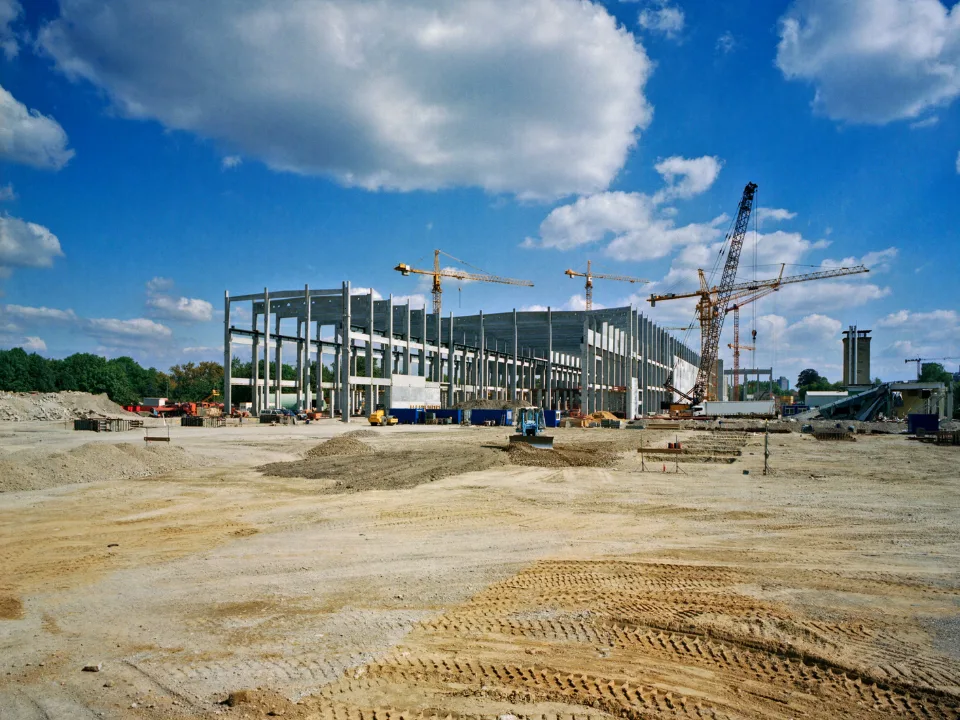- Global investors are scaling back US allocations and showing growing interest in European real estate.
- Fund managers report early signs of capital reallocation, driven by policy risk and economic uncertainty in the US.
- Urban logistics and residential-for-rent assets in Europe are drawing attention due to solid fundamentals and less institutional ownership.
- Despite the shift, the US remains essential due to its scale and limited global substitutes for large office assets.
Investor Confidence Wavers in the US
At the IPE Real Estate Global Conference in Copenhagen, over 75% of attendees signaled an investor shift, saying they would reduce US exposure and increase allocations to Europe. Many cite political and economic instability in the US as their main concern.
Richard Gwilliam, Head of Research at M&G Real Estate, says Europe is gaining appeal. “For investors wary of catching a falling knife stateside, Europe increasingly looks like a safe haven.”
Early Signs of Capital Movement
While the broader investor shift hasn’t fully materialized, some investors are already making changes. One M&G client recently renewed its non-US mandates but paused its US allocations. ESG considerations played a key role in the decision.
At DWS, clients are tilting more capital toward Europe. Last year, one client made three US investments and two in Europe. This year, the same client flipped that ratio. Japanese investors are also showing more interest in European cities than before.
Simon Wallace, Global Co-Head of Real Estate at DWS, explains: “Investors aren’t avoiding the US entirely—they’re just more cautious.”
Get Smarter about what matters in CRE
Stay ahead of trends in commercial real estate with CRE Daily – the free newsletter delivering everything you need to start your day in just 5-minutes
Europe Offers Stability and Value
European markets are benefiting from policy clarity, recovering fundamentals, and fresh fiscal stimulus. Germany, for example, is launching new spending programs expected to lift growth.
Marcus Meijer, CEO of MARK Capital Management, says his firm is seeing more US interest in European logistics and residential assets. These sectors have favorable supply-demand dynamics and less institutional ownership than in the US
Heitman’s Zubaer Mahboob adds that Europe continues to provide a predictable policy backdrop, even amid slower growth and nearby conflicts.
US Real Estate Faces Structural Challenges
Though investors are cautious, the US still dominates in terms of investable real estate. Yet its office market—a former stronghold for global capital—remains troubled.
According to MSCI, cross-border investment into US commercial real estate dropped from 12% in 2019 to 6% in 2024. Many investors have redirected funds into industrial assets, but those deals tend to be smaller and harder to scale.
Jim Costello, Co-Head of Real Assets Research at MSCI, notes that investors are struggling to find alternatives to large US office deals. “The question is whether capital will stay at home, shift to other sectors, or move into listed REITs for better liquidity.”
Uncertainty, Not Just Policy, Delays Decisions
Fund managers say uncertainty is freezing investment activity. Some report that billions of dollars in commitments were canceled late in the deal process due to market turmoil.
Brian Klinksiek, Global Head of Research at LaSalle, says: “Uncertainty is having at least as much impact on sentiment as policies. It has paused decision-making.”
Investor surveys from early 2025 confirm this trend. Geopolitical risk now ranks as the top concern for real estate investors globally. Although European markets showed early momentum in Q1, transaction volumes soon stalled.
Ronald Dickerman, Founder of Madison International Realty, sums it up: “It’s an unprecedented period. The market dashboard is spinning faster than ever.”
Outlook: Slow Shift, Growing Momentum
The current investor shift doesn’t signal a full retreat from the US, but rather a move toward greater diversification. As US political and economic risks persist, many see Europe as a logical next step.
If current trends continue, the coming quarters may bring increased cross-border flows into European sectors like logistics, residential, and infrastructure. For now, cautious optimism is guiding a slow but steady reallocation.

















